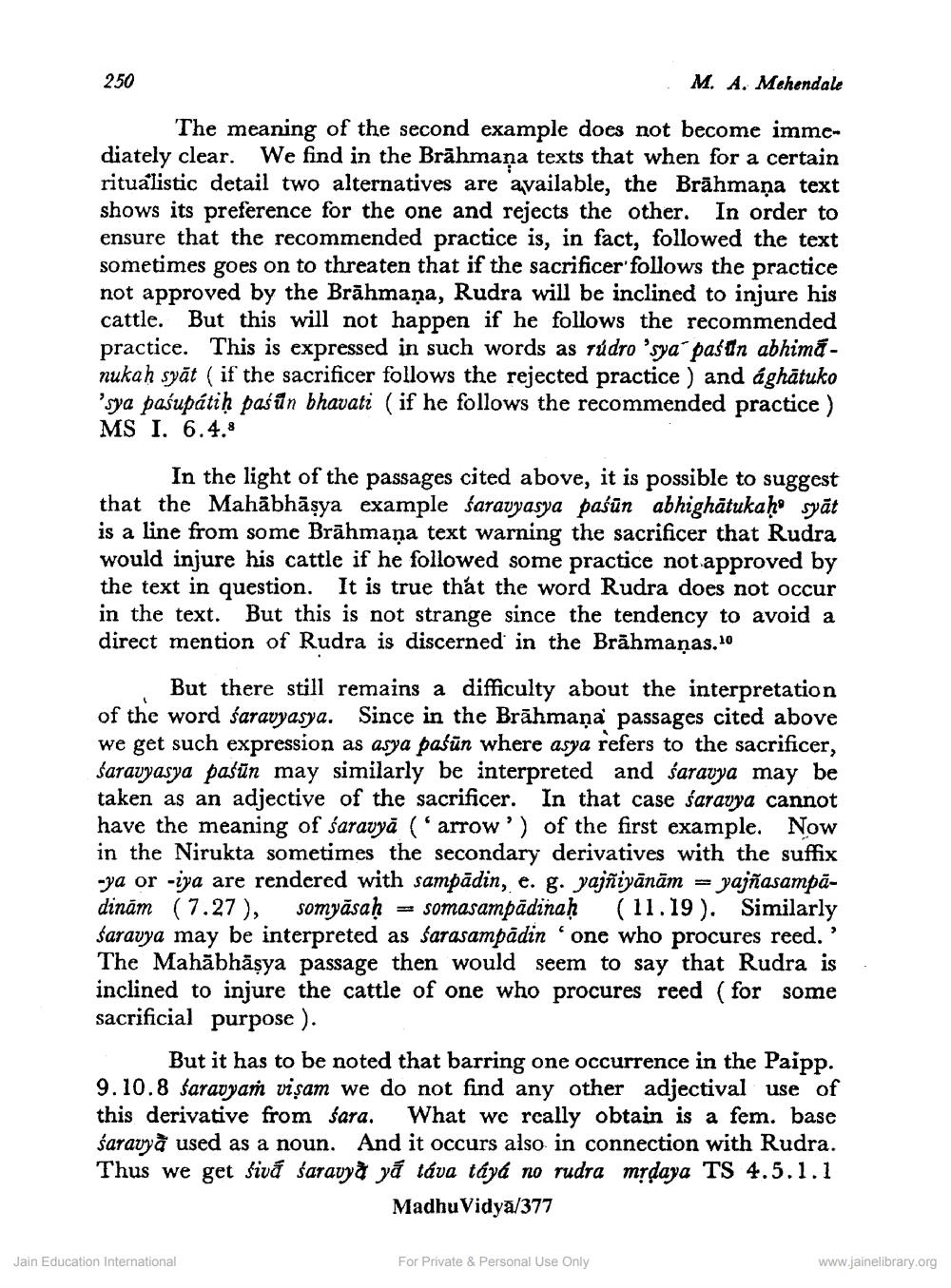________________
M. A. Mehendale
The meaning of the second example does not become immediately clear. We find in the Brahmaņa texts that when for a certain ritualistic detail two alternatives are available, the Brahmaṇa text shows its preference for the one and rejects the other. In order to ensure that the recommended practice is, in fact, followed the text sometimes goes on to threaten that if the sacrificer follows the practice not approved by the Brāhmaṇa, Rudra will be inclined to injure his cattle. But this will not happen if he follows the recommended practice. This is expressed in such words as rúdro 'sya ́ pasun abhimanukah syat (if the sacrificer follows the rejected practice) and ághatuko 'sya paśupátiḥ pasun bhavati (if he follows the recommended practice) MS I. 6.4.8
250
In the light of the passages cited above, it is possible to suggest that the Mahabhāṣya example śaravyasya pasūn abhighātukaḥ spat is a line from some Brāhmaṇa text warning the sacrificer that Rudra would injure his cattle if he followed some practice not approved by the text in question. It is true that the word Rudra does not occur in the text. But this is not strange since the tendency to avoid a direct mention of Rudra is discerned in the Brahmanas.10
But there still remains a difficulty about the interpretation of the word saravyasya. Since in the Brahmana passages cited above we get such expression as asya paśün where asya refers to the sacrificer, Saravyasya pasün may similarly be interpreted and saravya may be taken as an adjective of the sacrificer. In that case saravya cannot have the meaning of saravya (arrow') of the first example. Now in the Nirukta sometimes the secondary derivatives with the suffix -ya or -iya are rendered with sampādin, e. g. yajñiyānām = yajñasampādinām (7.27), somyasaḥ somasampadinaḥ (11.19). Similarly Saravya may be interpreted as sarasampadin 'one who procures reed. ' The Mahabhāṣya passage then would seem to say that Rudra is inclined to injure the cattle of one who procures reed (for some sacrificial purpose).
=
But it has to be noted that barring one occurrence in the Paipp. 9.10.8 faravyam visam we do not find any other adjectival use of this derivative from sara. What we really obtain is a fem. base saravya used as a noun. And it occurs also in connection with Rudra. Thus we get sivá śaravya yã táva táyá no rudra mṛdaya TS 4.5.1.1
Madhu Vidya/377
Jain Education International
For Private & Personal Use Only
www.jainelibrary.org




